The Sami Concept of Time
Sami Concept of Time versus Western Concept of Time
In order to understand the Sami concept of time from the Western perspective, we must first make the distinction between the two. Sami knowledge was based on experience in that knowledge was not obtained from a book or taught in classroom, but rather it was accumulated through repeated experiences of particular situations. Sami time was based on the cycles of nature, particularly the yearly cycle of the reindeer. Western time is based on scientific calculations and observations. From the sundial to the atomic clock, time relies on such measurements as the rotation of the earth to the number of oscillations of a particular atom. These finite measurements of time contrast drastically with the changeable calendar of the Sami. The Western concept of time is not a product of experiential learning but rather a shared careful observation made by a relative minority of the population.
Without a watch or clock, most Westerners would be unable to offer what they would consider an accurate estimate of the time. In Sami culture, knowing minutes and hours was not nearly as important as knowing what natural phenomena were occurring and which were to follow. For a people whose lives depended on nature completely, knowing when the reindeer migrate and when the salmon spawn was obviously of a higher importance than knowing the exact second, minute and hour of a particular moment in time. Specific days of the week were also part of the Sami calendar until the introduction of Christianity and the specific holy days associated with the religion. In order to understand the traditional Sami concept of time, the Western concept of time must be forgotten. In a world where Nature is ruler, Nature’s time is all that matters. One cannot predict the specific moment when reindeer herds migrate or ptarmigan chicks hatch; it changes from year to year, season to season. In a culture based entirely on Nature, time is relative to physical conditions, not necessarily the position of the stars or the planet, much less the oscillations of an atom.
The Seasons
Due to the close tie between Sami culture and reindeer herding, many of the Sami calendars are based on the life cycles of the reindeer. The eight seasons of this cycle are directly related to the annual behavioral patterns of the reindeer.
Spring-winter
The herd begins the migration from the forests to the calving grounds in the mountains. The pregnant females initiate this move and return to roughly the same area every year. Both the reindeer and the Sami move prior to the birth of the calves.
Spring
The temperature increases and the snow begins to melt. If the reindeer and Sami have not yet reached the calving grounds, travel will be very difficult as the snow turns to slush. During this time, the calves are born in the foothills of the mountains.
Pre-Summer
The reindeer graze and the Sami have some time to rest
and prepare for the earmarking of the calves. The calves are still very
young and if food is scarce during this time the herd could be
adversely affected.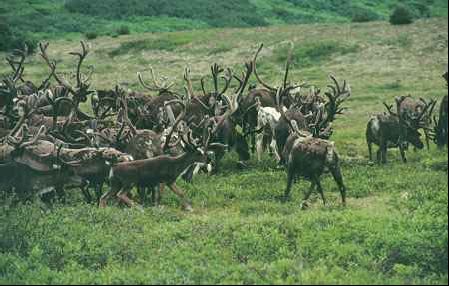
Summer
Much of this season is bathed in twenty-four hour per day sunlight. During this time, the important task of earmarking takes place. All the calves must be carefully marked to denote ownership between Sami families and communities.
Pre-Autumn
The Sami begin to prepare for the harsh winter by choosing the bull reindeer destined for slaughter. If the summer has been plentiful, the reindeer will be large and will make it through the winter. If they have not been able to put on substantial weight, the family may have to slaughter more reindeer in order to survive.
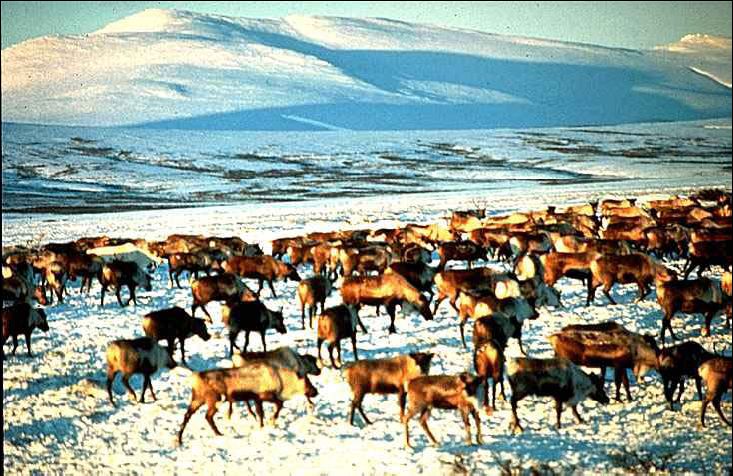 Autumn
Autumn
This is the season of rut. The reindeer mate prior to their return to the winter-grounds. This is also the season for fishing in the mountain- rivers. It will soon grow to cold to remain here in the mountains so the Sami and the reindeer prepare for the move.
Pre-winter
The herders lead the reindeer out of the mountains to the lowland bogs where vegetation still thrives.

This is the last bit of light that the herd and the Sami will see until the
end of the next season. As the temperature drops, the lowlands
become equally inhospitable.
Winter
Under a cover of twenty-four hour per day darkness, the Sami move the reindeer to the forest, the last place to find enough food to support the herd. Here, the reindeer will wait out the harshest period of the year until the sun returns and Nature urges them to return to the calving ground to begin the cycle again. The Sami are present in each of these seasons, but they are merely following the age-old cycle of the reindeer, of birth and death.
The Months
Even more specifically than the eight seasons, the Sami calendar was also divided into months that more or less match those of the Western calendar, but they are far less rigid in the time period that they define.
| Western | Sami | Meaning |
|---|---|---|
| January | Ođđajagemánnu | New Year Month |
| February | Guovvamánnu | Unknown |
| March | Njukčamánnu | Swan Month |
| April | Cuoŋománnu | Snow Crust Month |
| May | Miessemánnu | Reindeer Calf Month |
| June | Geassemánnu | Summer Month |
| July | Suiodnemánnu | Hay Month |
| August | Borgemánnu | Molt Month |
| September | Čakčamánnu | Fall Month |
| October | Golggotmánnu | Rut Month |
| November | Skábmamánnu | Dark-Period Month |
| December | Juovlamánnu | Yule Month |
Once again, this Sami concept of time is based on natural phenomena. The Sami name for February is not translated, as the meaning of Guovvamánnu has been lost in time. However, the other month names reveal the close tie between Sami culture and Nature. Also, the influence of reindeer herding is evident and the calendar is also based on other yearly occurrences within the reindeer cycle. For example, the Sami name for April, Cuo√ománnu, is derived from the Sami word for the hard crust that is beneficial during the migration from the winter grounds to the calving grounds. The influence of Christianity is perhaps also present in the Sami name for December, but Yule is, of course, an old pre-Christian word.
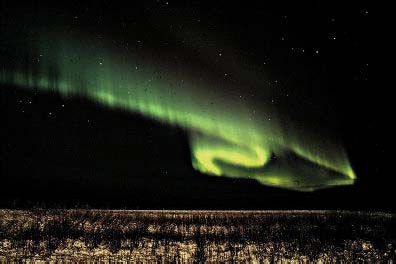
The Weeks
The Sami concept of time also includes various names for the
different weeks in a year. The number of week-names that have
survived is rather small and a number of them relate to events of the
Christian calendar. The use of calendars designating weeks may have
become more of a necessity after the introduction of Christianity and
weekly church services. The following list of Sami and the wooden
calendar both are strong indicators of this change in the Sami culture.
The week names relating to Nature do coincide with those of the
previously mentioned concepts of time.
| Sami Name | Meaning (Week) |
|---|---|
| Bar’debei-vâk’ko | St. Bartholemew (Aug. 24th) |
| Birgit-vâk’ko | St. Birgit’s |
| Dal’ve-vâk’ko | Winter |
| Gil’de-Marija-vâk’ko | Virgin Mary |
| Hallemes-vâk’ko | All-Saints |
| Mattusmes-vâk’ko | St. Matthew’s |
| Miccamar-vâk’ko | Mid-Summer |
| Mikkalmes-vâk’ko | St. Michael’s |
| Oar’re-vâk’ko | Squirrel |
| Simmun-vâk’ko | St. Simon’s |
| Sobmer-vâk’ko | Before Leaf-fall |
| Gássa-vâk’ko | Goose |
| Urba-vâk’ko | Trees Leafing |
Obviously, not all of the week-names have survived, but this small
portion of them is a good indicator that the unknown names were either
related to Nature or the Church. With the increased influence of Western
society the Sami calendar began to place as much importance on the
religious cycle of the year as Nature’s cycle. This combining of time
concepts was another step towards the assimilation of the Sami culture.
Still, dependence on reindeer husbandry demanded accurate knowledge of
the seasons and life- cycles of the reindeer. For this reason, the Sami
understanding of nature was not completely forgotten. As tax collectors,
traders and missionaries moved into Sapmi, these weekly calendars became
even more of a necessity as interaction with the outsiders typically
demanded a more fixed timetable than the erratic natural calendar of the
Sami.
The Wooden Calendar
The wooden calendar is also divided into weeks and it serves as an
easily transportable method for telling time. Typically fabricated from wood
or reindeer antler, this calendar was used to keep track of both natural
phenomena and religious occurrences. Written in the runic alphabet, the
wooden calendar was a useful tool in helping to preserve the balance
between Nature and religion as they denoted events in both realms. These
calendars date back to the mid- 1800’s and are another indication of the
impact of Christianity upon the Sami.
In these drawings of the Sami wooden calendar, there is a great deal of detail and attention given to the intricacies of this way of telling time.
Crosses denote days of religious significance while fish and leaf sprigs
denote various events in nature. By keeping track of time in this way, the
Sami could easily refer back to earlier times of the year in order to try to
predict when the fishing season would be most bountiful or whether or not
spring would arrive early or not. This sensitivity towards the ways of the
natural world was and is mandatory for the reindeer herders, fisherman and
farmers alike.
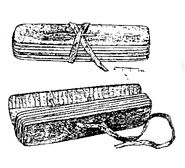
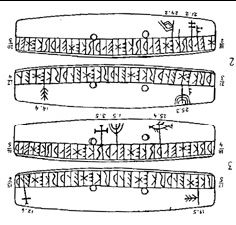
The Functionality of the Sami Concept of Time
The Sami concept of time is based on a strong relationship to Nature
and a dependence on experiential knowledge for survival. The Sami did not
want to change Nature, but rather they changed and adapted to the
conditions of the lands they inhabited. The Sami had to be well adapted to
and very knowledgeable about their surroundings in order to survive in such
a harsh climate. They feared disturbing the balance of Nature and did their
best to leave no trace of their presence. The nomadic past of the Sami
supports the idea of man following the flow of Nature without altering it.
The Sami concept of time is also based on the idea that one cannot rush
Nature. The reindeer will begin to migrate when Nature dictates, not when
the Sami decide that it is time.
Western concepts of time, and culture for that matter, are based more
upon controlling and regulating Nature’s resources. Domination becomes a
leading factor when it comes to a relationship with Nature. Differences in
cultural development have led to these varying concepts of time, and one is
no better or worse than the other. These somewhat conflicting concepts are,
however, very informative and they reveal a great deal about the cultures
which they represent.
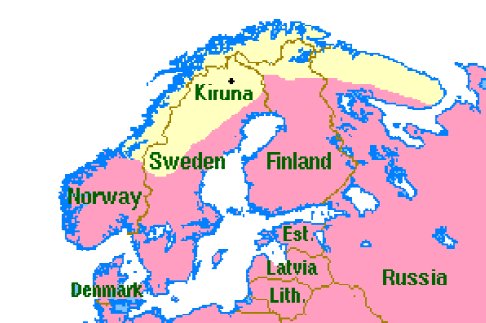
The Sami Concept of Direction
The Sami concept of direction is rather difficult to understand without
comparing it to the cardinal directions. Like a meaning lost in translation ,
the Sami word for ‘north’ does not mean ‘north’ at all in the traditional
sense. Direction, to the Sami, was based on where one was in relation to the
coast. North, or ‘davvi’ in Sami, means ‘towards the coast.’ Depending on
one’s location, as illustrated by the map, ‘davvi’ can mean a number of
different directions. ‘Lulli,’ or south, means ‘away from the coast’ while
‘oarji’ means ‘to one’s left when facing north. Explaining this terminology
in terms of the cardinal directions is cumbersome. A comparison of these
two concepts of direction is more effective. Based on the terrain, the Sami
concept of direction reveals that they perceived their relationship to the land
in a different way. They did not base direction upon their position according
to geographic directions, but rather they relied on a familiarity of their own
landscape in order to communicate where they were and where they were
going remembering important locations. They did rely somewhat on the stars as
directional markers, but due to the long period of daylight in the summer, the
Sami could not always rely upon the heavens to guide them in their travels.
Once again, the idea of experiential learning is crucial to survival for the
Sami. To be lost or alone in the tundra could be fatal, so accurate
knowledge of the landscape was mandatory.
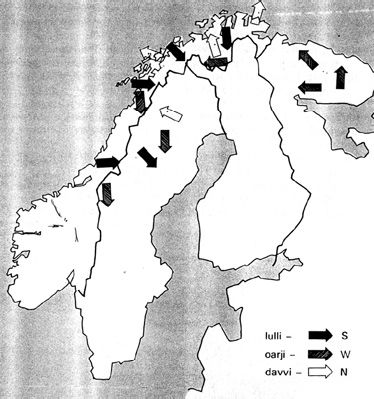
Citations
Photos and Graphics
1. Reindeer in Winter- http://reindeer.salrm.alaska.edu/html/image.html
2. Reindeer in Spring- http://reindeer.salrm.alaska.edu/html/image.html
3. Sami Months Calendar- http://www.itv.se/boreale/samieng.htm
4. Aurora Borealis- http://www.ptialaska.net/~hutch/nlrnway.jpg
5. Wooden Calendar Drawings- Granlund 1973, ACTA Lapponica XIX
(The Saami: People of the Sun and Wind)
6. Map of Sapmi- http://www.wennberg.com/cwhome/cwsaami.html
7. Map of Sami Directions from Davvin 3. Folkets Brevskole, 1993: 97.
Sources
Sami culture and History- http://www.itv.se/boreale/samieng.htm
Seasons of Reindeer Herdinghttp://www.sametinget.se/english/sapmi/erennar.html
Sami vs. Western Culturehttp://www.uit.no/ssweb/dok/hansen/lars/var/96.htm
Sami Timehttp://
www.ludvka.se/vbu/elcofril/samebyn/english/year.html
Sami Month Names Davvin 2. Folkets Brevskole, 1992: 144.
Week Names: Nielsen, Konrad og Asbjørn Nesheim. Lappisk (Samisk) Ordbok. Bind IV Systematisk Del, 1979: 21.
